If you’re adding a pint-sized pony to your herd, you might be wondering how to feed them properly.
While horses and ponies have similar digestive systems, they have different nutritional requirements that can vary greatly between individuals.
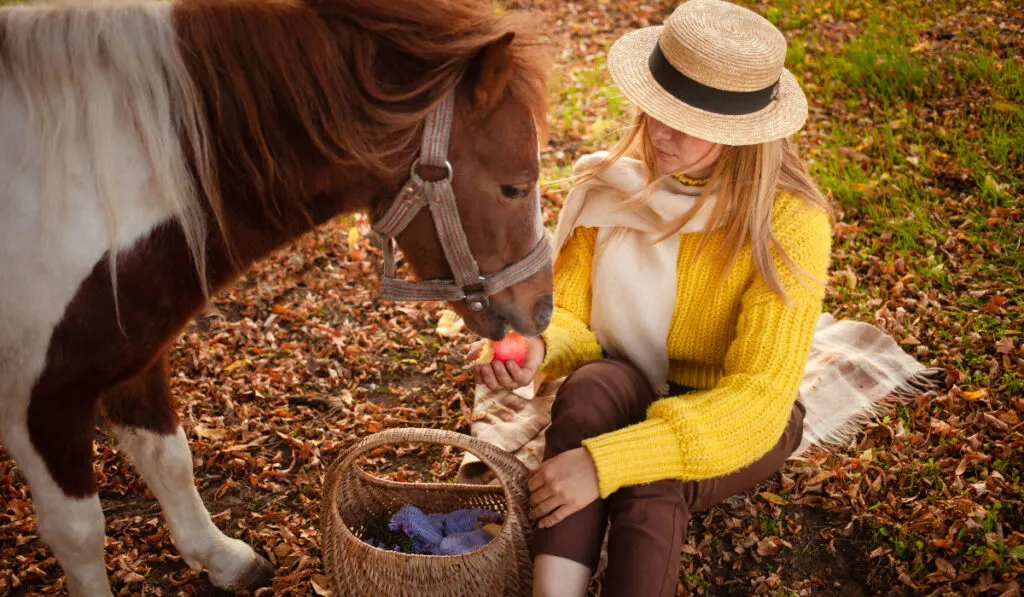
Ponies can generally thrive on less feed than their larger counterparts – but they can be more prone to obesity too. Here’s a basic guide that will help keep your pony healthy and in good condition.
Table of Contents
What Do Ponies Eat?
Thousands of years ago, wild ponies had to survive on sparse, coarse grasses that grew in the harsh landscape of northern Europe, the British Isles, and Scandinavia.
They became well-adapted to thriving with little food, which is why today’s modern descendants of these rugged little horses are usually considered “easy-keepers” – it doesn’t take much food to keep them fat and happy. (source)
Pasture Grass
If you’re lucky enough to provide a lush pasture for your pony, keep in mind that fresh grass is highly nutritious – but also highly fattening.
Horses and ponies spend the majority of their days wandering around and eating, so you want to make sure it’s the right grass for your pony.
This will vary greatly depending on the size of your pony, the size of your pasture, the species of grasses in your pasture, and your pony’s nutritional needs.
Overall, spring pasture will be lush and provide the most nutritional bang for your buck – but the high sugar content can cause health problems if your pony eats too much.
If you’re keeping your pony at home, spend some time figuring out the best pasture management techniques to meet their specific needs. (source)
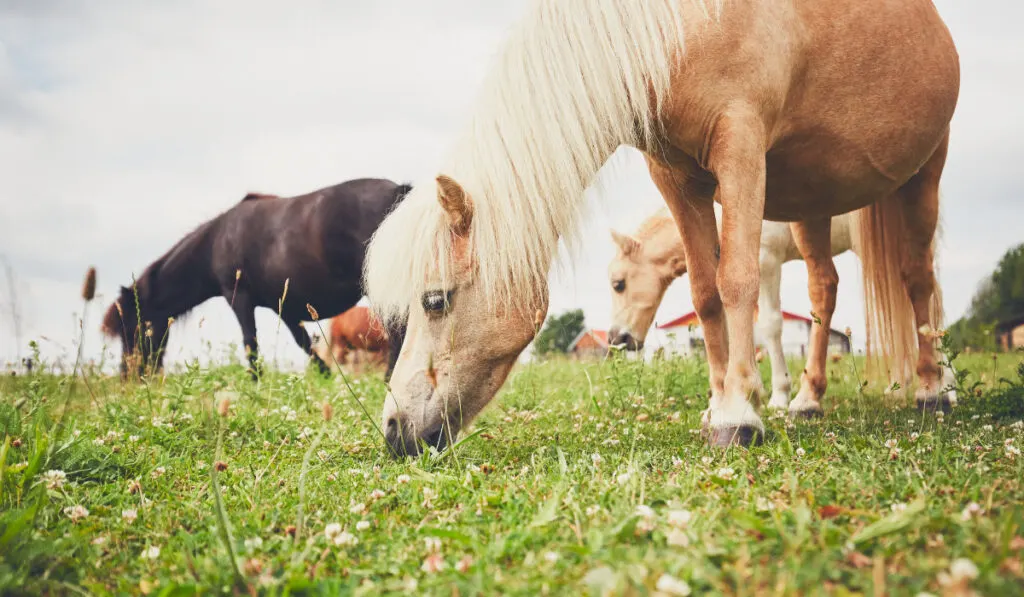
Other Feed
Ponies need about 2 – 2.5% of their body weight in feed a day.
While most of this comes from forage, some ponies need some extra feed to get them through a harsh winter or busy competitive season.
If you think your pony could benefit from grain or other supplements for an extra boost, consult with your veterinarian or an equine nutritionist to figure out exactly how much grain or other supplementation your pony may need.
Grain
Do ponies need grain? While there’s no cut and dry answer, ponies generally do not need as much grain (if any!) or nutritional supplementation as their larger counterparts.
After all, there aren’t any daily grain feeding rituals in the wilderness of northern Europe!
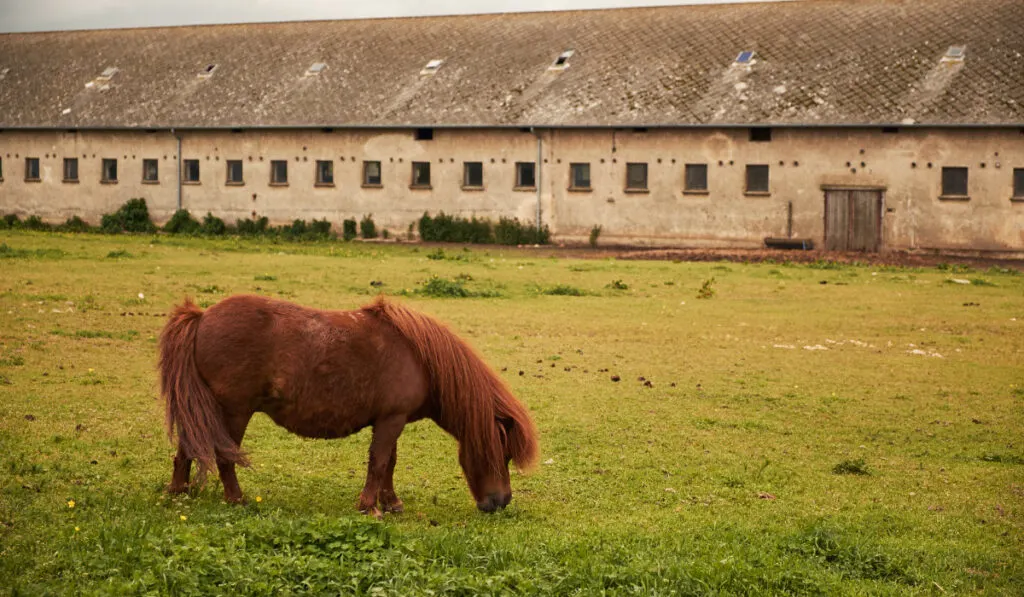
Grain mixtures are generally made from oats, barley, corn, wheat, or milo and supplemented with minerals or other concentrates.
It provides a lot of energy in a small package, and is best fed to hard-working ponies that aren’t prone to overeating or obesity. (source)
Supplements
Many owners choose to feed supplements to enhance their pony’s performance. It can be hard for pint-sized equines to get all the vitamins and minerals that they need with such little food, so a supplement can also help fill the gaps in their nutrition.
For the most part, your pony probably won’t need much supplementation in the way of energy-boosters unless you’re making the rounds of a competitive show circuit. Pay attention to your pony’s body condition and adjust accordingly. (source)
“Ration balancers” or “balancer pellets” are manufactured feed supplements that contain cereal grains and vitamins and minerals. They are sometimes added to grain, or fed on their own, depending on the pony’s needs. (source)
Treats
It’s no secret that ponies love treats! Good treats include slices of fresh fruits and vegetables (especially apples or carrots), hay cubes, or commercially prepared horse treats.
Always feed your pony treats sparingly, and avoid large quantities of sugar. (source)
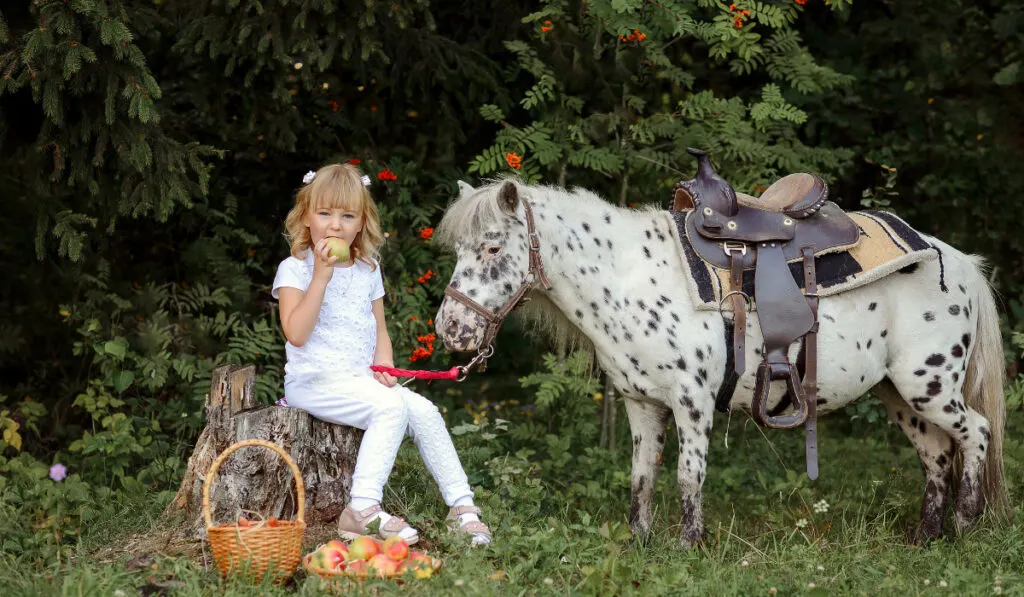
Forage for Ponies
Forage is the natural backbone of sustenance for our equine friends.
Both horses and ponies naturally evolved to walk miles every day, searching for the perfect plants and grasses. Modern forage usually comes in the form of pasture grass or dried hay.
Foraging accounts for 50-90% of a pony’s diet, so you’ll need to make sure you’ve got the right kind to suit their needs.
Consider feeding 1.25 – 1.5% of your pony’s body weight in hay, limit pasture time or use a pasture muzzle, and try to feed hay with a low starch and sugar content. (source)
Hay Forage
If you’re planning to board your pony at a facility that will feed for you, you may not have as much say in the kind of forage they provide. As long as it’s in good condition (clean, free of mold, fresh-smelling), ponies can usually thrive on it.
If you are purchasing your own hay, there are two main types that each have their benefits and disadvantages:
Legume Hay – Alfalfa, White Clover, Red Clover
Alfalfa hay is a popular choice for both horses and ponies. It’s tasty, so your pony will likely waste less of it. It’s high in protein and minerals, which can inspire him to drink more water (and a hydrated pony is a healthy pony).
However, because legume-hay is so nutrient-dense, it might be too much for an easy-keeping pony that doesn’t get much exercise.
You may also need to add a mineral supplement to balance the high calcium content as well. Red clover can cause slobbers, which is pretty harmless – but also pretty gross. (source)
Overall, a good-quality alfalfa is best for ponies that are in a busy lesson program, training for rigorous competition, or broodmares that are in foal or lactating.
It may cause harmful weight gain in a retired pasture puff, so keep a close eye on your pony’s condition.
Grass Hay – Kentucky Bluegrass, Orchardgrass, Timothy
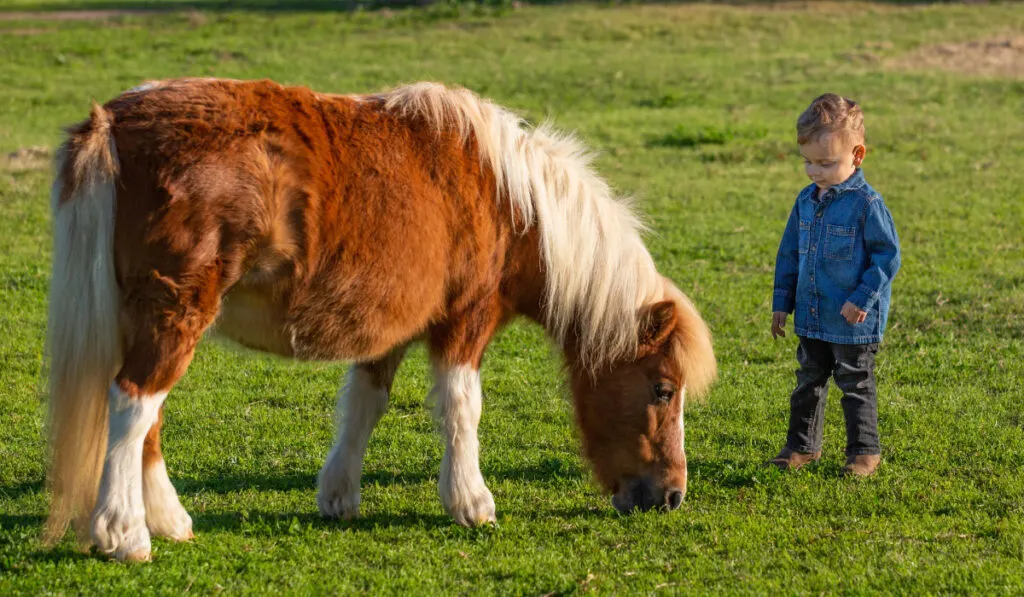
Grass hay is usually all a pony needs to keep them in good condition. It’s lower in protein and minerals than legume hay, and contains more fiber.
To a pony’s digestive system, a good grass hay can seem just like the natural forage they’d find in the wild – it’s bulky and slow-digesting, and ponies have to eat more of it to feel full and satisfied (it’s also a great boredom buster).
Straight grass hay can be a great choice for most ponies, but you may want to add some legume hay if your pony could use the extra nutrition.
Hay Harvesting Time
The timing of a hay harvest has an impact on its nutritional value. Hay is classified by “cuts” – aka, when the grass was mowed and packaged. (source)
- First cut – Hay grown in the spring is usually mowed in the summer, dried, and then baled. It doesn’t contain a lot of legumes, is fairly coarse with thick stems, and is usually more plentiful than second-cut. It’s a good choice for easy-keepers like ponies, donkeys, and sheep.
- Second cut – A second summer harvest of young plants produces nutrient-dense, green hay with a fine texture. It contains more protein, and can be more expensive than first cut. Many ponies do well with a limited amount of second-cut hay, only when they need the extra nutrition and calories.
If you’re not sure exactly which hay to feed to your pony, consult your veterinarian or a professional equine nutritionist for guidance. If you are purchasing your own hay, it’s beneficial to have it tested so that you can appropriately supplement if you need to.
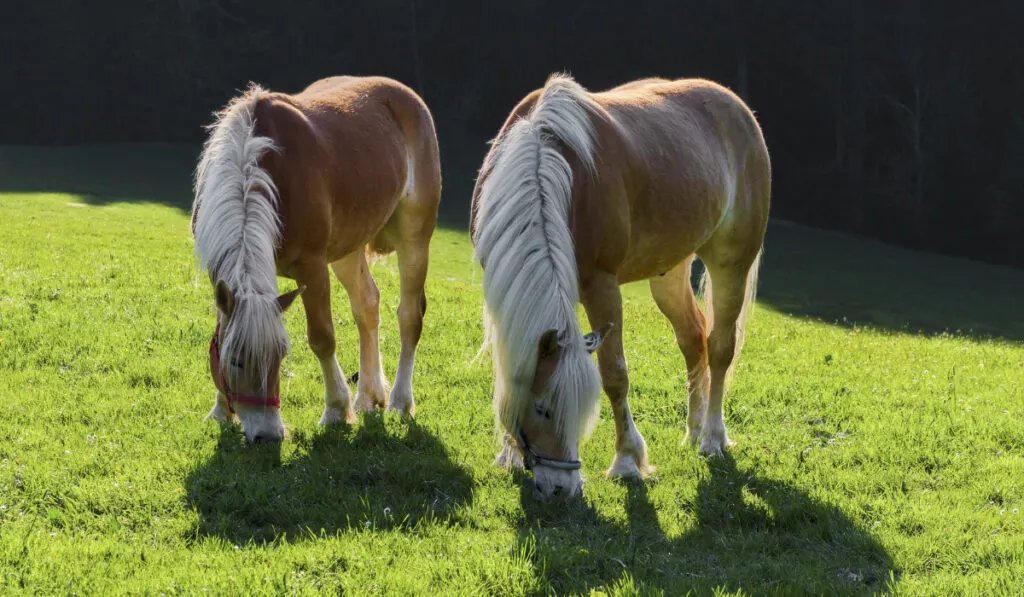
Health Problems from Poor Feeding Practices
Improperly feeding your pony can result in several health conditions with long-term consequences.
Overfeeding an easy-keeper with second-cut hay, grain, or too much pasture grass can lead to obesity. This provides increased stress on the heart and lungs, joints, and can lead to other conditions like founder or laminitis. (source)
If your pony is eating as little as possible and is still overweight, you may need to increase his exercise. Taking a daily walk with your pony can help boost your bond – and shrink his belly.
You should aim to keep your pony’s body score at around a 5 on the Henneke Body Conditioning System. If you need help, always consult a professional for advice.
Source:
- https://www.succeed-equine.com/succeed-blog/2015/12/02/hay-is-for-horses-on-types-of-hay/#:~:text=Kentucky%20bluegrass%2C%20orchardgrass%20and%20timothy,good%20choice%20for%20many%20horses.

